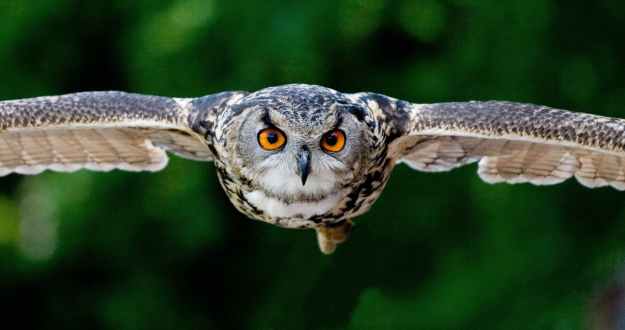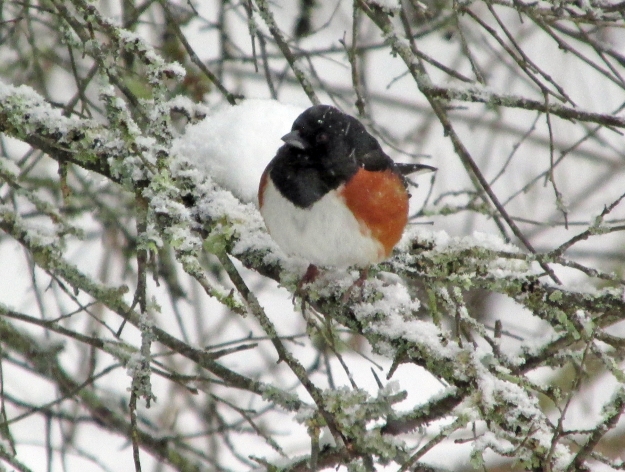
Photo by Bryan Stevens • Chipping sparrows, such as this individual, showed up for the Fall Bird Count in good numbers.
The 50th consecutive Elizabethton Fall Bird Count was held on Saturday, Oct. 5, with 29 observers in eight parties. Participants tallied 118 species, which is below the recent 30-year average of 125 species. Windy conditions throughout the day and dense fog on the higher mountain tops contributed to the reduced variety. The all-time high on this count was 137 species in 1993.
The yearly survey is not limited to Carter County and Elizabethton. The long-running count includes parts of the adjacent counties of Unicoi, as well as Johnson Sullivan and Washington.
The total follows:
Canada Goose, 635; Wood Duck, 97; Mallard,173; Blue-winged Teal, 30; and Green-winged Teal, 3;
Ruffed Grouse, 3; Wild Turkey, 56; Common Loon, 1; Pied-billed Grebe, 7; Double-crested Cormorant, 10; and Great Blue Heron, 35.
Black Vulture, 78; Turkey Vulture, 139; Osprey, 7; Northern Harrier, 3; Sharp-shinned Hawk, 2; Cooper’s Hawk, 9; Bald Eagle, 12; Red-shouldered Hawk, 5; Broad-winged Hawk, 2; and Red-tailed Hawk, 13.
Killdeer, 35; Spotted Sandpiper, 1; Lesser Yellowlegs, 1; Ring-billed Gull, 1; Rock Pigeon, 402; Eurasian Collared-Dove, 1; Mourning Dove, 153; and Yellow-billed Cuckoo, 1.
Eastern Screech-Owl, 10; Great Horned Owl, 5; Barred Owl, 2; Chimney Swift, 244; Ruby-throated Hummingbird, 7; and Belted Kingfisher, 24.

Photo by Bryan Stevens • Eastern Screech-owls, such as this individual, were the most numerous of the owls found on this year’s Fall Bird Count.
Red-headed Woodpecker, 2; Red-bellied Woodpecker, 50; Yellow-bellied Sapsucker, 7; Downy Woodpecker, 36; Hairy Woodpecker, 6; Northern Flicker, 41; and Pileated Woodpecker, 17.
American Kestrel, 16; Merlin, 2; Peregrine Falcon, 1; Eastern Wood-Pewee, 12; Least Flycatcher; 1; and Eastern Phoebe, 82.
Yellow-throated Vireo, 1; Blue-headed Vireo, 18; Philadelphia Vireo, 1; Red-eyed Vireo, 7; Blue Jay, 347; American Crow, 442; and Common Raven, 10.
Tree Swallow, 118; Carolina Chickadee,141; Tufted Titmouse, 82; Red-breasted Nuthatch, 6; White-breasted Nuthatch, 28; Brown Creeper; 1; Winter Wren, 2; Marsh Wren, 1; and Carolina Wren, 114.
Golden-crowned Kinglet, 5; Ruby-crowned Kinglet, 1; Eastern Bluebird, 114; Veery, 1; Gray-cheeked Thrush, 6; Swainson’s Thrush, 37; Wood Thrush,15; American Robin, 212; Gray Catbird, 23; Brown Thrasher, 9; Northern Mockingbird, 56; Eurasian Starling, 555; and Cedar Waxwing, 70.
Ovenbird, 3; Northern Waterthrush, 3; Black-and-white Warbler, 4; Tennessee Warbler, 51; Kentucky Warbler, 1; Common Yellowthroat, 6; Hooded Warbler, 3; American Redstart, 7; Cape May Warbler, 1; Northern Parula, 4; Magnolia Warbler 6; Bay-breasted Warbler, 36; Blackburnian Warbler, 4; Chestnut-sided Warbler, 4; Blackpoll Warbler, 4; Black-throated Blue Warbler, 8; Palm Warbler, 56; Pine Warbler, 3; Yellow-rumped Warbler, 4; Yellow-throated Warbler, 2; and Black-throated Green Warbler, 7.

Photo by Bryan Stevens • Male American redstarts are unmistakable warblers in their orange, black and white plumage.
Eastern Towhee, 53; Chipping Sparrow, 46; Field Sparrow, 11; Savannah Sparrow, 2; Song Sparrow, 126; Swamp Sparrow, 4; and Dark-eyed Junco, 73.
Scarlet Tanager, 5; Northern Cardinal, 120; Rose-breasted Grosbeak, 67; Blue Grosbeak, 1; and Indigo Bunting, 27.
Red-winged Blackbird, 194; Eastern Meadowlark, 14; Common Grackle, 1; Brown-headed Cowbird, 11; House Finch, 36; Pine Siskin, 8; American Goldfinch, 99; House Sparrow, 19.
Long-time count compiler Rick Knight spotlighted some notable misses, including Green Heron, Common Nighthawk, Eastern Kingbird, Loggerhead Shrike, White-eyed Vireo, Barn Swallow, House Wren, Blue-gray Gnatcatcher, Hermit Thrush, Prairie Warbler, Lincoln’s Sparrow and Red Crossbill.
“The crossbills were missed because Roan Mountain was completely socked in with fog all day,” Knight explained. He added that only a few shorebirds were found partly due to shortage of habitat as well as the drought in the region at the time of the count.

























